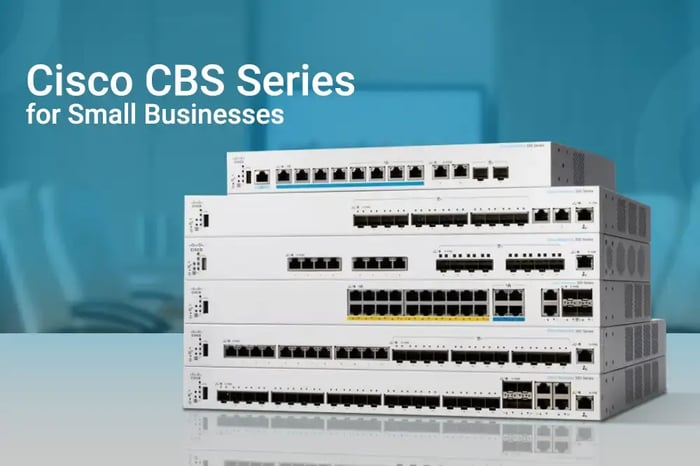You have no items in your shopping cart.

Audiophile Switches: Are they Necessary, If So, When?
Audiophile switches confuse a lot of people due to their price range. This article delves deep into what these switches offer and who can benefit from them.
Although traditional ethernet switches offer various features and are performance-packed, they are not always the best option for streaming data requirements. TCP is a reliable, connection-oriented protocol that guarantees the delivery of each ethernet packet and sequentially transmits the same.
However, this is not the case with audio streams because it does not guarantee the required sound quality or smooth audio connectivity. Streaming audio issues such as drop-outs, latency, and disconnections led to the invention of audiophile ethernet switches.

What is an audiophile switch?
An audiophile network switch is designed for high-end audio systems to support smooth, reliable audio connections and better audio quality. The primary idea behind designing these switches is to reduce audio drop-outs and noise in audio signals sent over networks.
These switches ensure high-quality audio streams and low latencies to limit audio drop-outs and interference while prioritizing audio traffic. Audiophile network switches are typically used in high-end audio systems or professional recording studios where audio quality is critical.
These network switches are typically more expensive than standard home network switches. However, they are also essential for those serious about achieving the best audio quality in their network infrastructure. Some of these switches can have built-in amplifiers to improve the overall audio quality.
The difference between an audiophile switch and a standard ethernet switch
An audiophile switch is specifically designed for use in high-end audio systems. It is typically used to connect multiple audio devices, such as:
Digital-to-analog converters (DACs) and amplifiers to a network facilitate the transfer of high-quality audio signals.

On the other hand, the standard network switches allow communication and connection between multiple devices in a LAN or WAN infrastructure. This communication occurs between systems, PCs, printers, switches, routers, and even firewalls.
The main difference between an audiophile switch and a standard ethernet switch is that audio-grade switches provide a higher-quality connection to enhance audio signals.

As mentioned earlier, audiophile switches provide high-quality audio, whereas regular ethernet switches focus on secure and reliable communication.
Another key difference is that an audiophile switch prioritizes voice or audio signal traffic rather than data transfer speed, which regular ethernet switches prioritize.
Are audiophile network switches just a marketing strategy?
There are many discussions on the internet about the necessity and benefits of audiophile switches. Opinions and experiences depend on the person's needs and budgetary constraints.
Technology is vital when it comes to business criticality and achieving preset goals. Standard network switches offer a mix of features and security to protect and enhance network traffic with an option for particular service prioritization. The QoS features can be implemented to focus on the audio traffic, but it is not a dedicated solution.

In environments where clear audio and signaling are essential, audiophile-grade switches are valuable as a dedicated solution.
These switches are not an option for businesses that deal in audio voice/audio-related products and services; it is a must-have solution.
What to Consider When Choosing an Audiophile Switch
1. QoS
Quality of Services QoS feature can prioritize the voice traffic and deliver better-optimized voice/audio streaming. This feature further helps to allocate the required bandwidth to dedicated ports or applications.
2. Gigabit Interfaces
Make sure the switch has a fast and stable network connection to prevent network latency. For Gigabit Ethernet or faster speeds, consider one with multiple Gigabit Ethernet ports to allow multiple streams.
3. Easy to deploy
It should be easy to configure and deploy, even if it is a dedicated audio-grade switch. You don't need to be a technical expert. The plug-and-play characteristic will instantly allow you to use the switch in your environment.

4. Jitter Effect Improvement
Jitter is a pain in audio streams that negatively impacts audio traffic and quality. Look for a switch that offers an active jitter effect improvement mechanism.
5. Low Latency
When a high-frequency ethernet packet is transmitted, latency and jitter will likely affect the delivery time and quality. Owning a switch that reduces network latency is always a plus.
Are audiophile network switches still up in the game?
Technically, the need for audio-grade network switches entirely depends on the requirement and business environment. Today's advanced layer 2 and layer 3 switches offer QoS capabilities to optimize and prioritize the voice and video traffic for mission-critical applications and systems. The standard switches offer both traditional features and options for audio signal prioritization. That is why many people consider paying extra for an audio-grade ethernet switch unnecessary.

However, if audio quality is essential to your business, consider using an audiophile switch to ensure top-notch quality.
So, do audio-grade switches offer value?
The quick answer would be "YES." The days for audiophile switches are not over. They can be implemented in specific environments to achieve quality audio and voice traffic for further optimization.
Best audiophile network switches for streaming audio available in the market
If you need enhanced voice and audio traffic in your network and want to improve audio-specific connections further, we recommend using an audiophile switch. Below are some of the best options available in the market.
● Cisco Catalyst 9200L-24T-4G-E
● TL-SG105
● Bonn N8
Do you think a more affordable solution would suit you better? If so, CHECK OUR ARTICLE ON THE BEST HOME SWITCHES.













